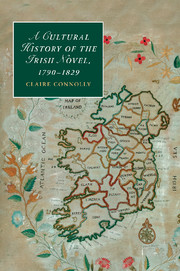Chapter 5 - Dead and alive
Published online by Cambridge University Press: 05 December 2011
Summary
‘Nothing in Ireland is ever over’, remarks Elizabeth Bowen, in a review of a book about seventeenth-century Irish history. Yet many regarded the passing of Catholic Emancipation into law as a natural endpoint. Not only did Emancipation promise the accommodation of Catholics within the Union, but the 1820s also saw the emergence of a group of talented Catholic novelists, including John and Michael Banim and Gerald Griffin, the growth of whose reputations coincides with the establishment of the Irish novel as a distinct commercial entity. Despite their participation in a lively cultural market, however, the novels of the 1820s are notably concerned with experiences that exist on the borderline between existence and extinction, and pursue a sophisticated and compelling reading of their contemporary moment via the dissonance between dead and alive states.
Death and its rituals represent not only ‘a point at which religious positions were renegotiated and asserted’, as has been observed of early modern Ireland, but also a space from which cultural identities can be addressed and re-imagined. The porousness of the life–death boundary can, in turn, be seen to address the role of fiction within the culture of romantic nationalism. Belief possesses both religious and popular resonances in the novels, within which issues of faith and doubt also cross over into and become absorbed within the discourse of fictionality. If all fictions ‘have a whiff of death about them’, however, treatments of dead-alive states in the Irish novel of the period remain closely tied to the lived experience of the literary marketplace in the decade in which, as Ina Ferris has argued, ‘an Irish line of fiction begins to be defined’.
- Type
- Chapter
- Information
- A Cultural History of the Irish Novel, 1790–1829 , pp. 164 - 199Publisher: Cambridge University PressPrint publication year: 2011

